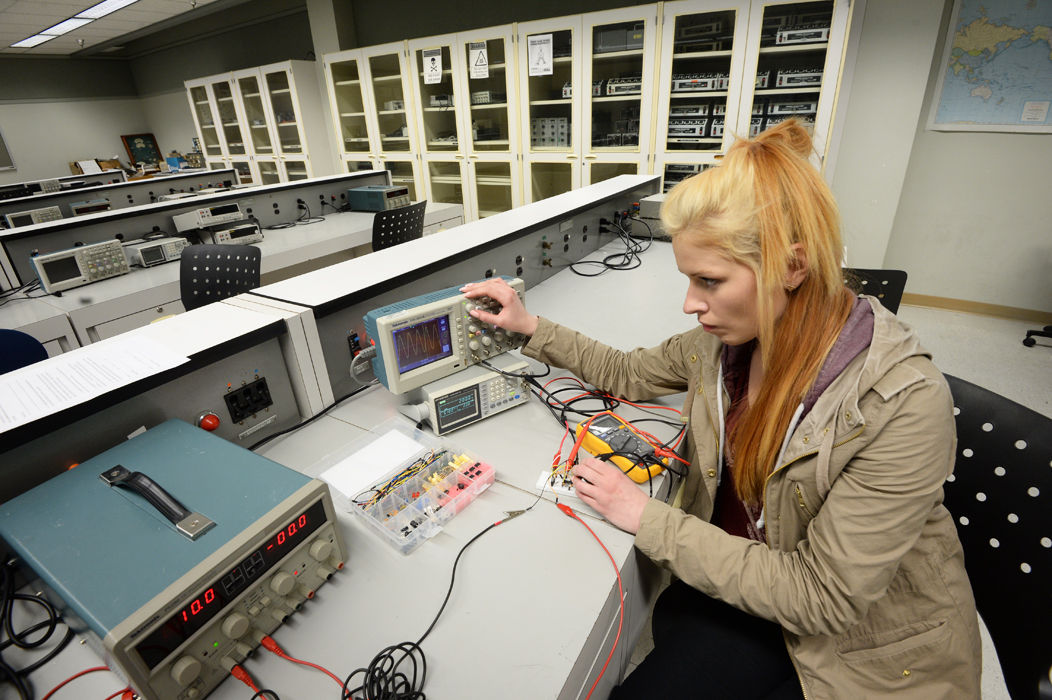Blind STEM applications benefit women, minorities
March 24, 2016
The STEM (science, technology, engineering and mathematics) fields are some of the most difficult to enter and there is currently a gendered problem with how STEM employers hire people.
There are people that are trying to face gender gap issues head-on, such as the company GapJumpers.
Co-founder, collaborator and CEO of GapJumpers, Kédar Iyer said the company is trying to eliminate the biases people face when applying for a job, such as gender, and one of its solutions for bias is to implement blind auditions.
WSU professor of sociology Julie Kmec’s sociology 390 class has FaceTimed with Iyer and discussed the issue of bias in the hiring of employees and the GapJumpers solution towards this.
“Using GapJumpers, employers invite job applicants to take audition challenges which mimic what successful hires will be required to do on the job,” Iyer said. “Instead of shortlisting candidates based on their resumes, employers using GapJumpers pick the best candidates to interview based on their work samples and performances on the auditions.”
This allows employers to see the potential hires work before they see them in person.
Iyer siad companies using GapJumpers are seeing four times as many qualified candidates, a 200 percent increase in women selected for interviews, and a 60 percent increase in other under-represented candidate groups, such as minorities.
According to the U.S. Department of Commerce article, Women in STEM: A Gender Gap to Innovation, women are vastly underrepresented in STEM jobs, even though they make up almost half of the U.S. college-educated workforce.
The article states although women fill almost half of all jobs, they hold less than 25 percent of STEM jobs.
Kmec said there are several factors which could contribute to the low number of women in STEM fields today, one of the most prevalent being motherhood.
“I’ve found that mothers in STEM fields feel that they have to work harder than other people,” Kmec said. “In the masculine work culture that permeates STEM fields women just feel like they don’t fit in and this lack of fit becomes worse when they become pregnant or a mother.”
She said because there are stereotypes about mothers there is a larger conflict with women being in this male-dominated field.
“There is research that women, when they are in these masculine fields, they try to downplay their femininity and try to hide that they are a woman, but then that is hard to do, to engage on that level and hide what you are,” Kmec said. “These women feel that they have to work harder, maybe not because they are working harder doing science but because they have to manage who they are.”
Kelly Ward, department chair and professor in the College of Education, said a significant reason why people do or do not succeed in STEM is math preparation.
“Math is really a big issue for girls in school and testing as well, so people get kind of identified early on if they have good math aptitude or not,” Ward said. “A lot of times that is what really separates people when it comes to STEM.”
Iyer said that much of what drives GapJumpers is the creators of the company have all faced bias in their careers.
“Our founding team comes from diverse educational backgrounds and each one of us has been a victim of unconscious bias during our early career and job searches,” Iyer stated. “Hence the motivation to build GapJumpers in order to level the playing for skilled youth from all backgrounds.”





















